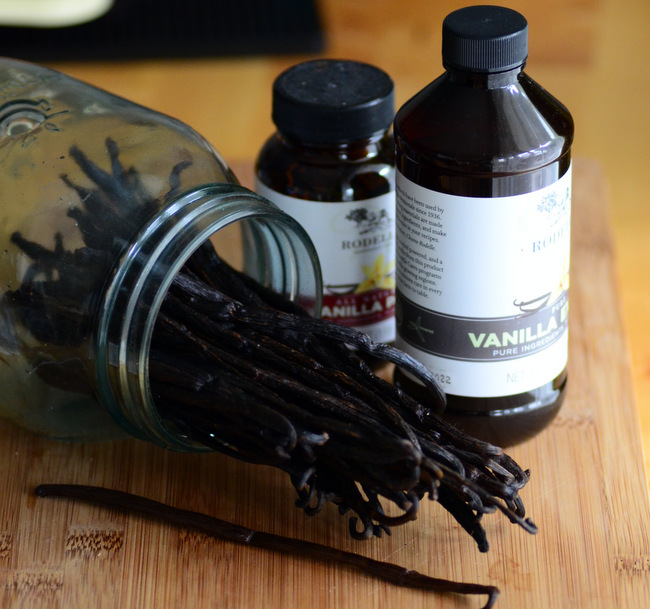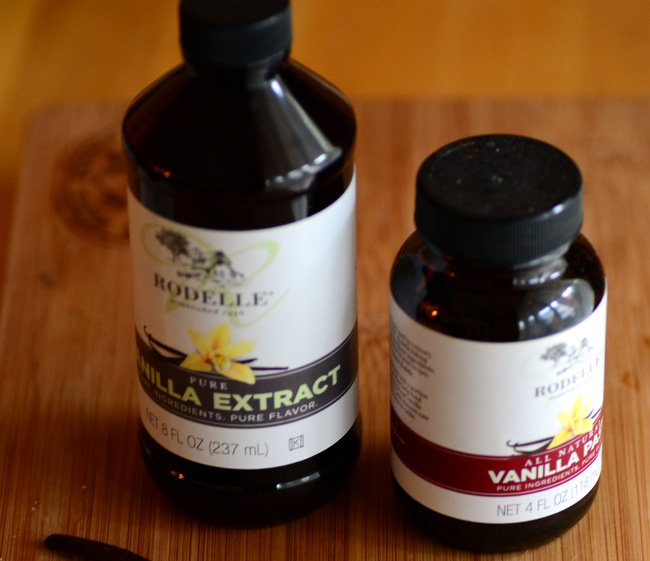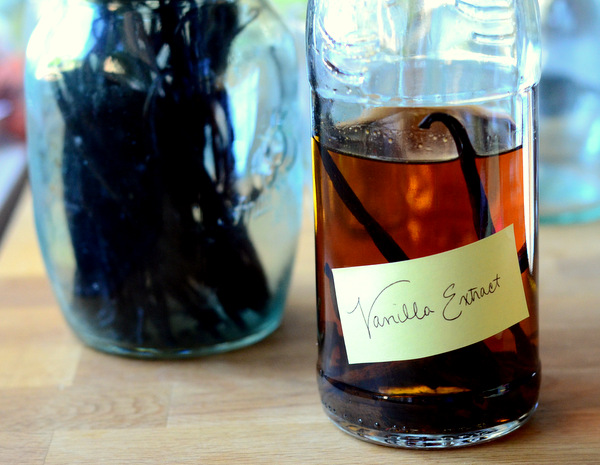Vanilla is a staple in all kinds of baked goods, from blueberry muffins to chocolate cake. However, not all vanilla is created equal. This guide will help you to choose — and use — different types of vanilla in your recipes!

Vanilla beans
Vanilla beans are the fruit from orchids of the genus Vanilla. There are several different species of orchid, and they thrive in hot, humid climates, such as parts of Mexico, Tahiti, Madagascar and Central and South America.
The plants must be pollinated by hand so that they produce the fruit, which is then picked and dried to make the dark vanilla beans that you see packaged in stores. Producing the beans is a labor-intensive process, which contributes to the high price of vanilla beans.

How to use vanilla beans in baking
The beans can be used in any recipe that calls for vanilla, but they are a little more difficult to use than extract. The beans must be split lengthwise to expose the seeds, which can then be scraped out and added to a batter or dough.
The pods also contain flavor and can be used to infuse liquids, such as ice cream bases, or to make homemade vanilla sugar.
When it comes to flavor, half of a vanilla bean is a substitute for up to 1 tablespoon of vanilla extract. Since they can be expensive, however, I recommend saving them for recipes where the vanilla flavor will clearly come through and you can see the vanilla bean specks, such as in vanilla ice cream.
Vanilla extract
Vanilla extract is the most common form of vanilla when it comes to baking, and you probably have a jar of it in your kitchen right now. Vanilla extract is made by steeping vanilla beans in alcohol to draw out their flavor.
Legally, it’s required that vanilla extract be at least 35 percent alcohol and contain at least 100 grams of vanilla beans per liter of extract. Vanilla extract is sometimes also called “vanilla essence.”

Alcohol is exceptionally good at drawing out flavor compounds, such as the vanillin in vanilla beans, and preserving them. When the extract is added to a recipe, the alcohol burns off when exposed to heat — whether it’s baked into a cake or stirred into a pudding — leaving behind only the flavor of vanilla.
What is alcohol-free vanilla?
If you prefer not to use something with alcohol as a base, there are some alcohol-free vanilla flavorings available.
Because an extract is legally defined as containing at least 35 percent alcohol, the alcohol-free flavorings do not meet the definition of an extract. These often use gylcerine or some kind of sugar syrup as a base. They can be used as a 1-to-1 substitution in a recipe that calls for vanilla extract.

Vanilla bean paste
This vanilla-flavored paste is packed full of vanilla bean seeds and is almost always made with a sugar syrup as a base. The sugar syrup is thick enough to create a suspension of the vanilla bean seeds and prevent them from falling to the bottom of the container, so you get the flavoring and the specks in any recipe that you use it.
How to use vanilla bean paste
Vanilla bean paste can be used as a 1-to-1 substitution in a recipe that calls for vanilla extract, but it really shines in recipes where you can see the specks of vanilla, which you won’t see in a regular extract.
Vanilla cakes and light colored cookies are an excellent choice for vanilla bean paste for that reason. That being said, you can certainly use it in any recipe that calls for vanilla and it will add a good vanilla flavor.

Imitation vanilla extract
The flavor compound vanillin in vanilla beans is responsible for your basic vanilla flavor, though vanilla — like chocolate — is full of different flavor compounds that give it complexity. Vanillin can be produced easily and inexpensively in a lab. This manufactured vanillin is used to create imitation extract, which has the same alcohol base as traditional extract, but does not use real vanilla beans as a flavoring agent.
How to use imitation vanilla
Imitation vanilla extract typically delivers a strong vanilla flavor that is not quite as complex as that of pure vanilla extract. It can be used as a 1-to-1 substitution for pure vanilla extract in any recipe that calls for it, but it is best used in recipes where vanilla is a background flavor and not the star of the show.
This includes many cookie recipes, chocolate baked goods and other recipes where another flavor is clearly showcased. With imitation flavoring, you’ll still get the vanilla flavor, but you’ll also save a bit of money, which you can use to splurge on vanilla beans for all of your other vanilla recipes.

Share tips, start a discussion or ask one of our experts or other students a question.
No Responses to “How to Choose & Use Different Kinds of Vanilla”